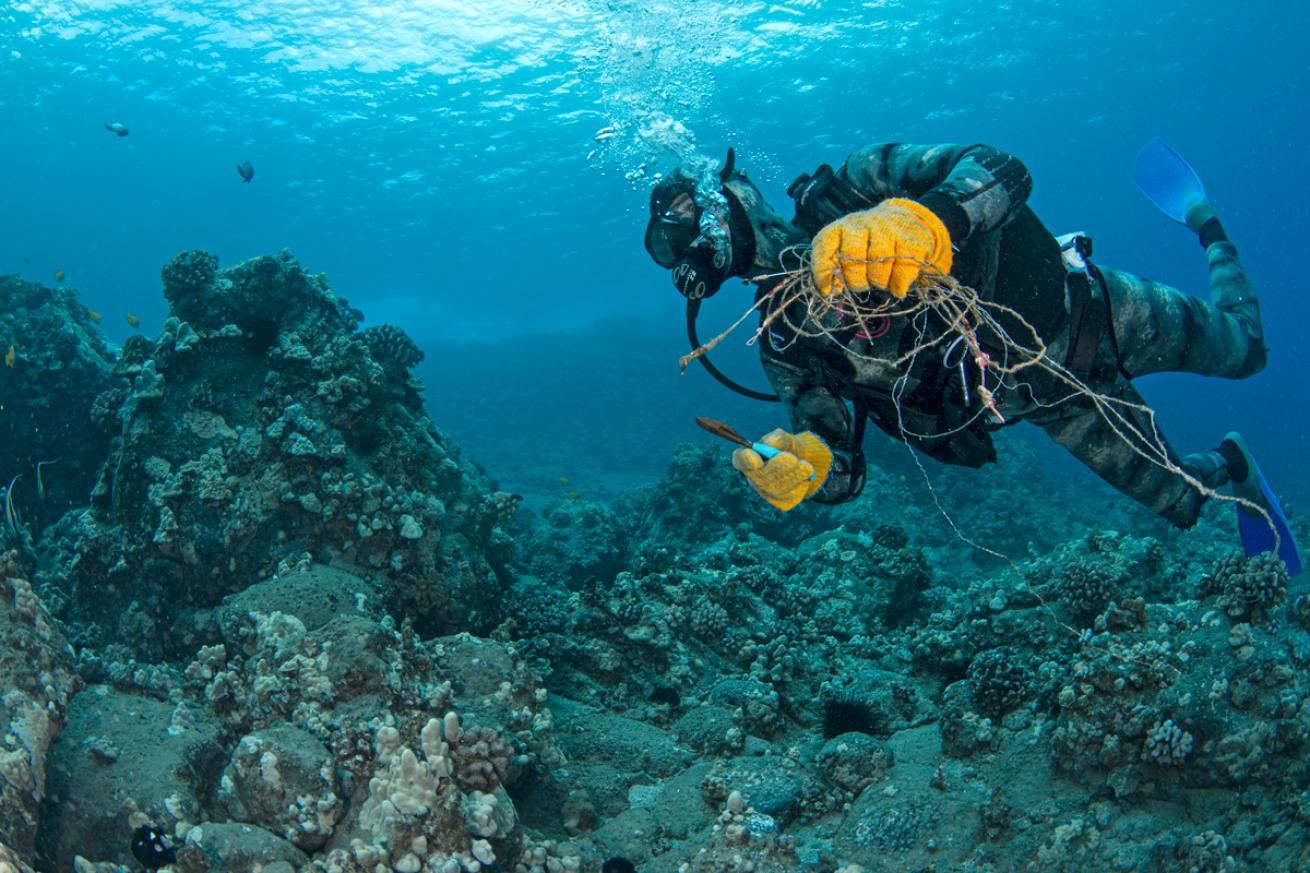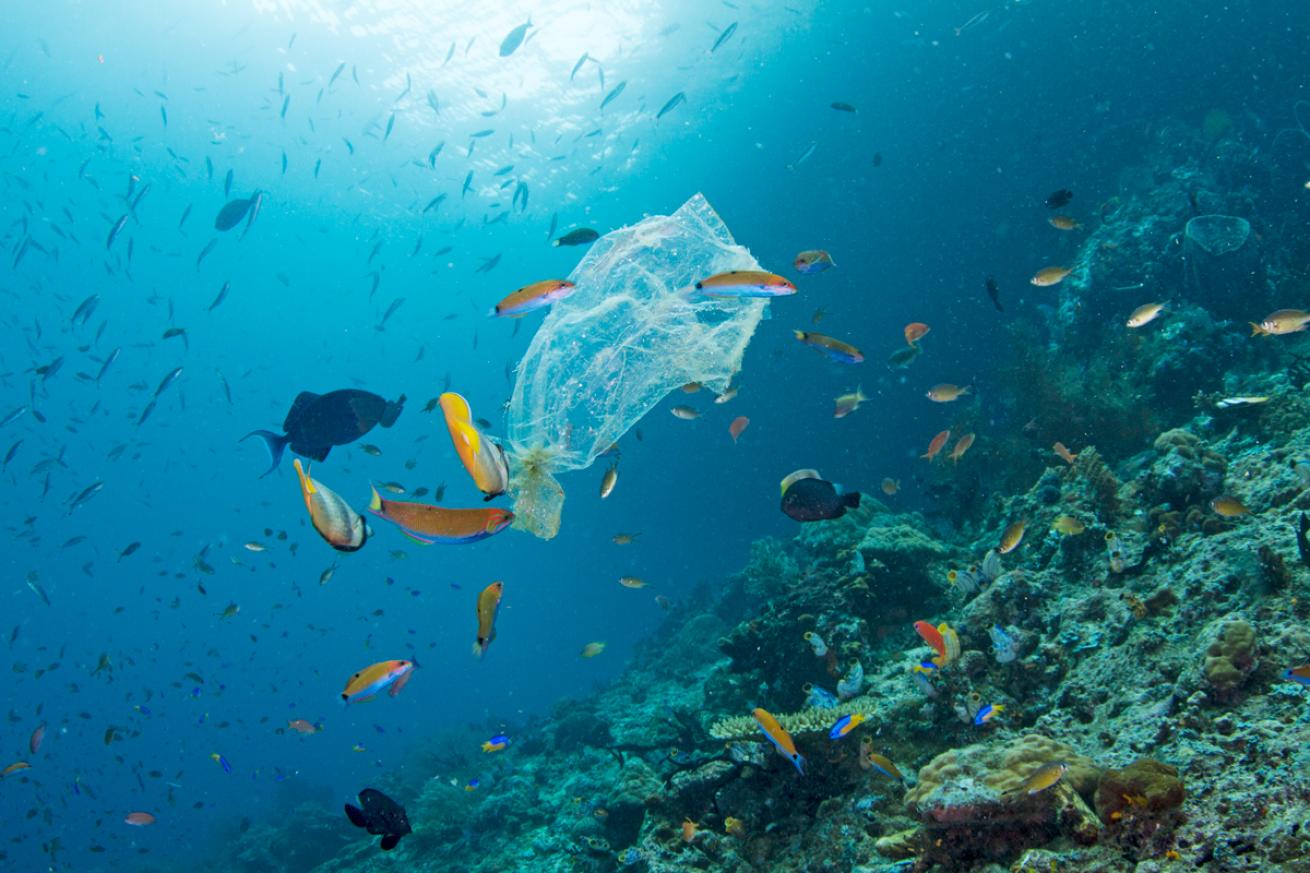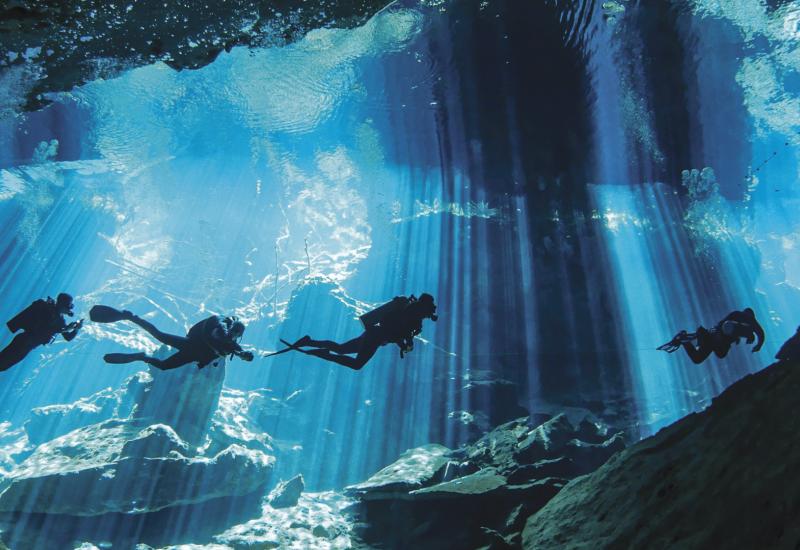How to Safely Collect Marine Debris

Annie CrawleyAvoid wrapping line around your fingers as this can cut off circulation and tighten over time.
During a cleanup dive in Hawaii, beneath a popular local fishing spot, I noticed coral heads wrapped in fishing line. Each one was either dead or dying. Unfortunately, where there are people, there is pollution. According to the International Union for Conservation of Nature, at least 14 million tons of trash end up in the ocean every year, 80 percent of which is plastics. Rather than biodegrade, plastics break into smaller and smaller pieces, which are consumed by marine animals. As scuba divers, we not only seek adventure, but simultaneously work to protect what we love. On your next clean-up dive, these tips will help you safely execute your mission.
When participating in a Dive Against Debris event, you’ll want specialized equipment to deal with the additional demands and hazards involved with this type of diving. Always follow local laws. When diving in boat-traffic areas, a dive flag may be required for every buddy team. It’s standard to carry a cutting device on every dive, but on cleanup dives you might need a few different cutters as well as a dive bag to collect the debris. Line cutters, underwater shears and dive knives can be used to cut rope, wire, textiles, tarps or hoses. Polypropylene plastic fishing line wraps around coral reefs, wrecks, pilings and just about any other underwater structure. Game bags with a one-hand, quick-release handle, designed for crab or lobster fishing, make great collecting bags for cleanup dives.
Hooks can puncture you or get stuck on your equipment. Use care and carry an old glove or piece of neoprene to stick them into. Cut the line into smaller pieces or wrap it up as you collect it so you don’t get entangled. Avoid wrapping line around your fingers as this can cut off circulation and tighten over time. Instead, wrap line around old neoprene or another object to keep it organized in your bag. When cleaning up fishing areas, carry a bag to collect line, and a separate bucket to collect the lead weight. Larger knives work better to cut ropes, lines and buoys.
Always assess a scene, and make decisions on what to leave behind for your safety. It’s also important to know what not to collect. Fish and octopuses often find refuge in glass bottles or lay eggs on tires or cans.
You’ll want specialized equipment to deal with the additional demands and hazards involved with this type of diving.
Before touching or untangling anything, make sure you know the ecosystem and avoid poisonous corals, hydroids and stinging animals. Wear gloves to protect yourself, and touch only trash. Diver safety always takes priority; never attempt to remove something if doing so could be hazardous to you. Sometimes a ghost net draped on a reef may be too big or heavy to handle, or it might be so old that it has become a part of the reef.
Batteries and other heavy objects need to be left on the bottom unless using a lift bag. Trying to remove a heavy object without a lift bag can exhaust you or lead to an uncontrolled ascent if you were to lose contact with the object. The Search and Recovery Diver and Rescue Diver courses introduce divers to lift-bag techniques. Download the PADI app to learn common knots, including the bowline, sheet bend and half hitch. When using a lift bag with your buddy, agree on roles and responsibilities. Use your alternate air source to fill the bag until the load becomes neutrally buoyant. If you lose control of the bag during ascent, let it go and reunite with it at the surface. Never attach a bag to yourself.

Annie CrawleyEighty percent of ocean trash is plastic. Plastics do not biodegrade; instead, they break into smaller and smaller pieces, bioaccumulating up the food web.
Position yourself in a head-down, finup position. Anticipate a change in your buoyancy as the weight of the trash in your bag increases. For light loads, you can control your buoyancy with your BCD. Ensure all your gauges are in place, and be careful not to drag your bag of trash. Consider wearing neoprene dive shorts with pockets over your wetsuit or adding a pocket to your drysuit/wetsuit so you can collect trash on any dive.
Marinas can be extremely silty environments. When diving in silt, the bottom can get stirred up to the point that you lose all visibility. Carry a light and discuss what to do if you become separated from your buddy. Create a good dive plan to account for potential issues like this. A dive stick (a thin, sturdy metal piece of equipment) is handy for helping you balance your body when cleaning up coral reefs or highly silty areas, and also for preventing damage to the environment.
Cleaning up the ocean feels good and allows you to take immediate action. All cleanup dives need shore support. Get kids, teens and scouts involved. Work with schools and local conservation groups. Encourage nondiving friends to take PADI AWARE specialty courses with no dive requirements. Underwater cleanups give your friends and family a way to learn more about scuba diving and the importance of a healthy ocean, and they unite us in action for the environment. Make it a daily practice to refuse single-use plastic, reduce your trash, and support companies that care about sustainability. Make sure you take images of your efforts and share them on social media with #PADIAWARE. Your voice and actions matter.
Pro Tip
Before you do a cleanup dive, practice in a pool with your buddy. Put objects of different weights on the bottom. Maintaining neutral buoyancy, know the limit of weight you can put in your bags before needing to surface. Use a lift bag with heavier objects, and never clip bags to yourself. Practice ascending with the load. Repeat until you feel confident with these skills.
Are you ready to step up, help save the ocean, and #LiveUnfiltered at the same time? Sign up for a PADI Open Water Diver course now.










